1. Overview
¡°CFD wind power engineering software - WindFarm Resources Economy Assessment Software¡± is used in the wind farm resources economy assessment, which is developed together by Beijing Millennium Engineering Software Co. and China Hydropower Engineering Consulting Group Co.
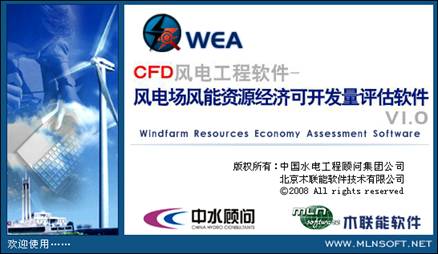
The software is mainly used in the pre-construction of wind farm. Through the calculation of feed-in tariff and installed capacity on the basis of wind resource data, geography information data and so on, WMS provides the quantitative index of wind farm resources economy assessment of different region, and shows the corresponding geographic information. It provides a great convenience for the wind farm planning.
2. Characteristics
¡óConsidering the wind farm's topography, land utilization and transportation, in line with the actual situation
¡óProviding four methods to calculate k, c value
¡óAble to calculate feed-in tariff of different turbine type
¡óAble to provide the quantitative index of wind farm resources economy assessment, and in accordance with the economic indicators shows the corresponding geographic information
3. Functions
WEA is on the basis of wind resource data, geography information data and so on, evaluating the wind resource economic development and quantifying the wind economic development. It is mainly used in the wind resource measurement and assessment of pre-feasibility reports and feasibility reports. WEA mainly includes four function modules: wind resource information processing, geographic information processing, feed-in tariff processing, and the assessment results, seen as follows:
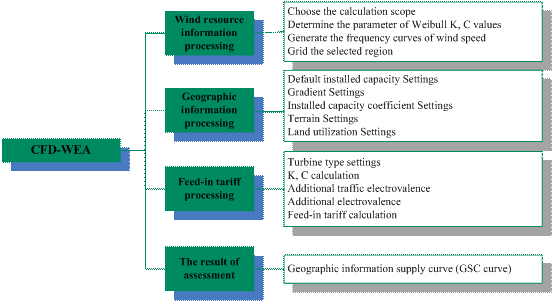
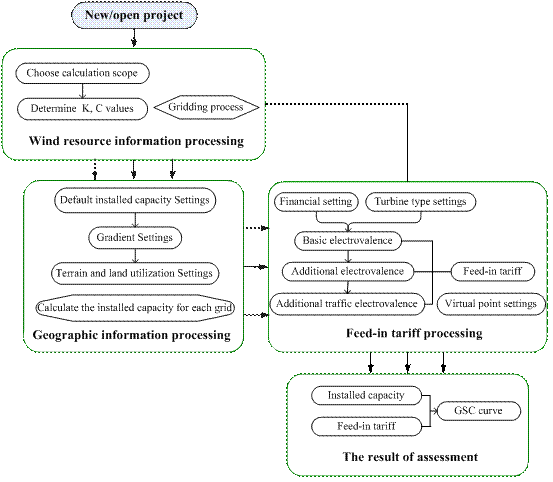
(1)Wind resource information processing
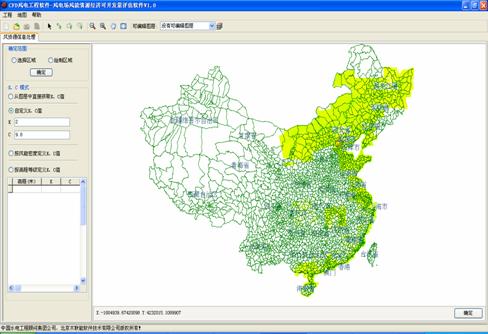
The main function of the Wind resource information processing module is to choose the calculation scope in the national wind resource density map, determine the parameter of Weibull K, C values, generate the frequency curves of wind speed, and grid the selected region.
(2) Geographic information processing
Geographic information processing module includes the settings of default installed capacity, gradient, installed capacity coefficient, terrain, land utilization, which is used to calculate the installed capacity for each grid.
(3)Feed-in tariff processing
Feed-in tariff processing module is used to calculate the wind power generation of entire field and feed-in tariff of each grid. The power calculation includes three parts: turbine type settings, K, C calculation and power generation calculation. Feed-in tariff calculation includes basic electrovalence, additional traffic electrovalence, additional electrovalence, and feed-in tariff calculation.
(4)The result of assessment
The result of assessment is shown as geographic information supply curve (GSC curve), which reflects the relationship between installed capacity and feed-in tariff.
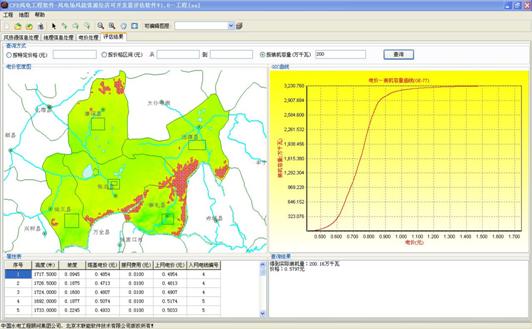
Economic development index can be quantified through GSC curves, and a corresponding map based on economic indicators can be shown.
